Writing with HTML
- Hyper Text Markup Language
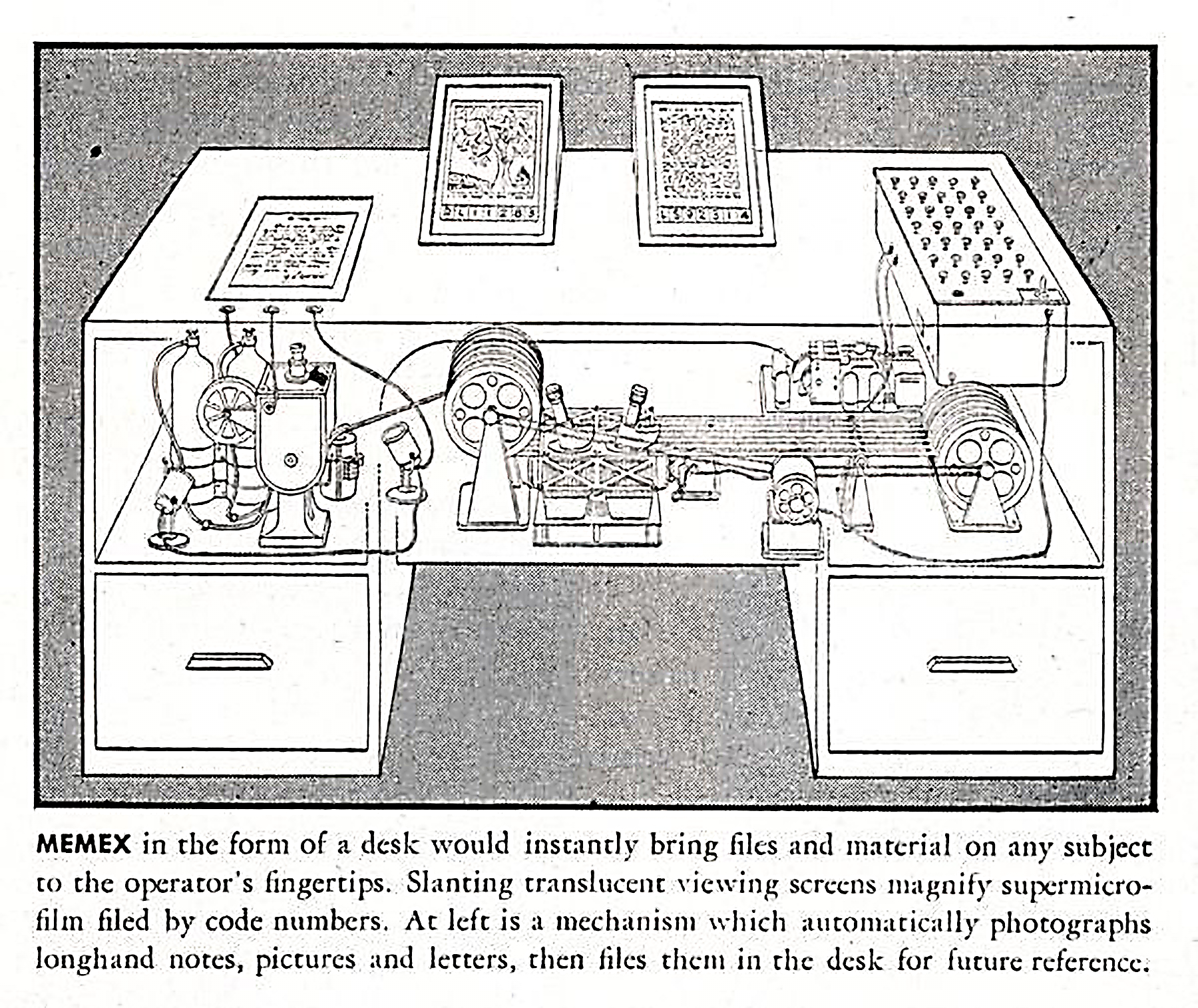
- There are a few precursors to Hypertext and HTML
- First is the Memex, a speculative tabletop device that used microfiche to store entire libraries of information.
- Vannevar Bush envisioned the memex as a solution to indexed media, which he viewed as unsuitable for human modes of thinking, which are more relational
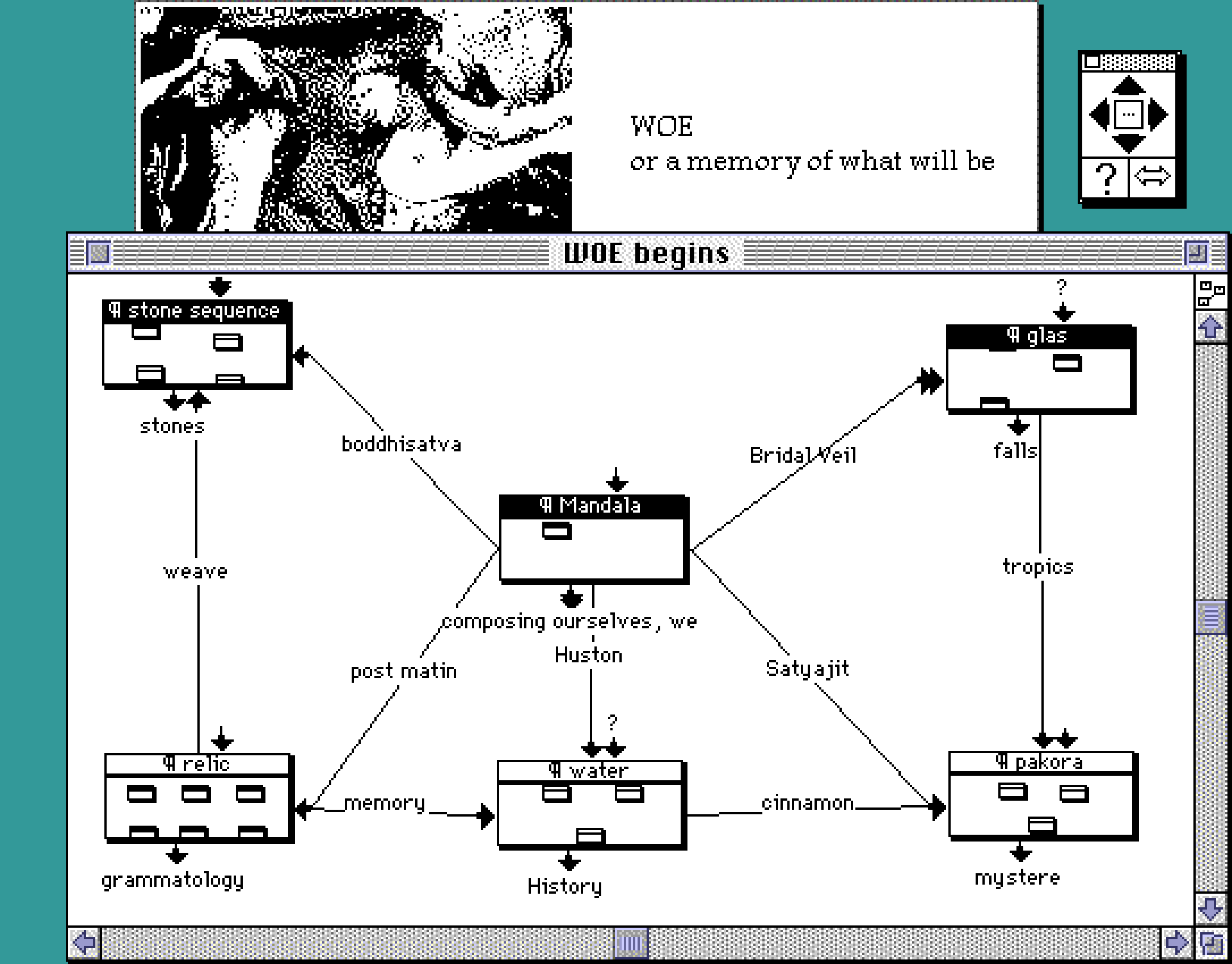
- Storyspace was one of the first actualized versions of this idea of Hypertext.
- A method of writing and storing information that would allow for a nonlinear, networked reading experience.
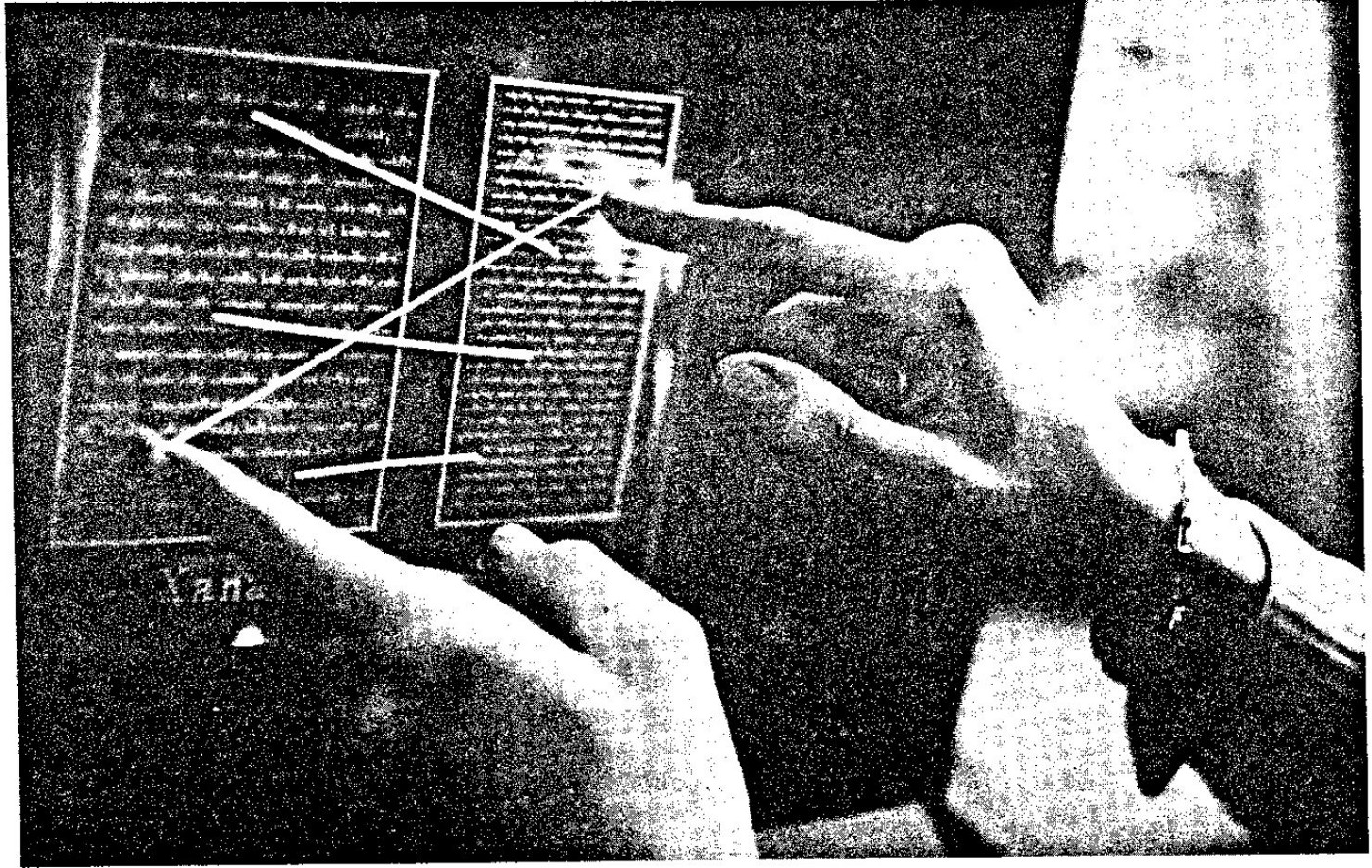
- there was an alternate proposal to HTTP, called Xanadu by Ted Nelson which was a protocol for navigating networked texts
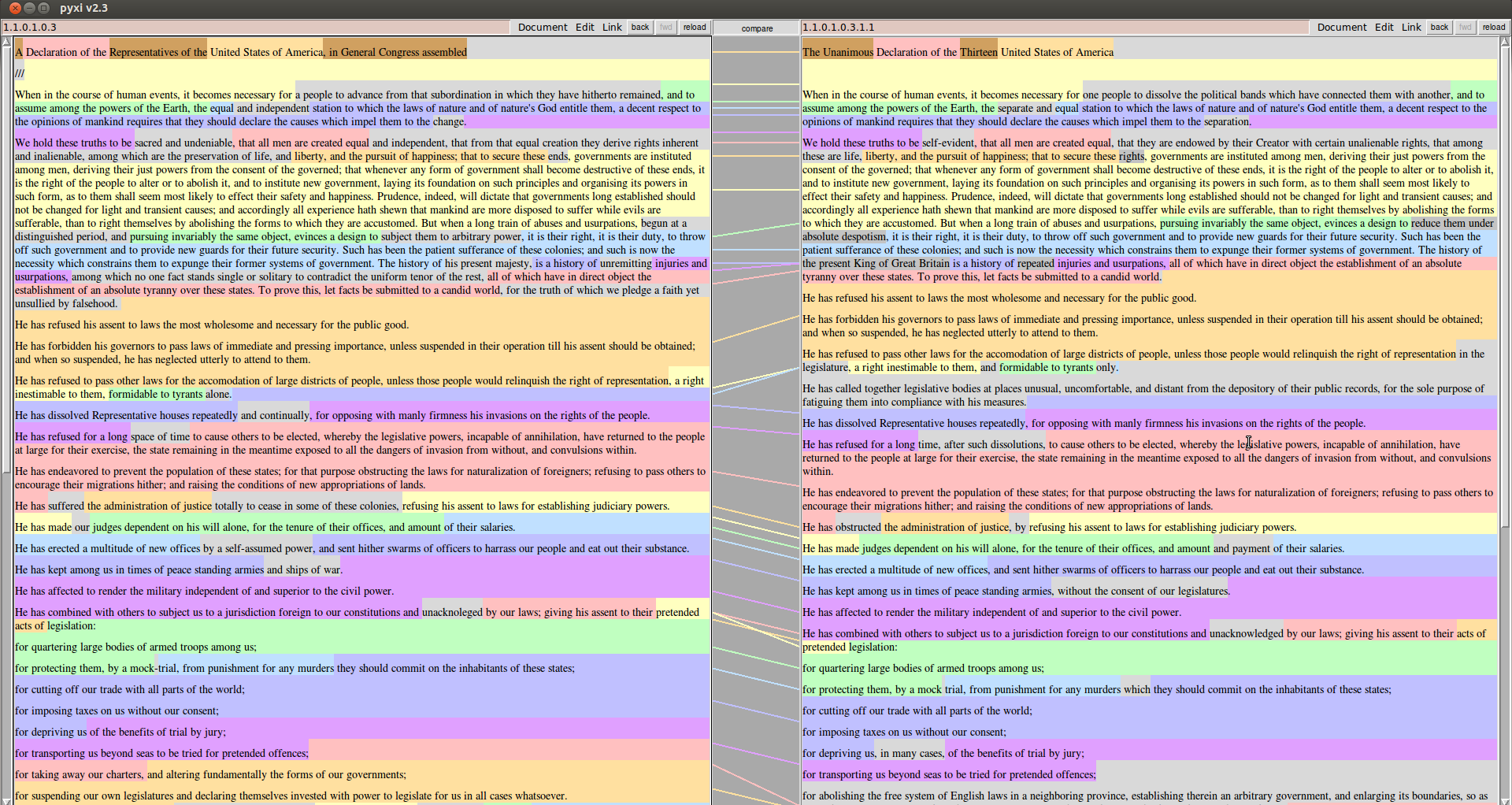
- unlike HTTP, Xanadu accounted for link rot by making link bidirectional
- was more complex and interconnected
- this is an early prototype showing multiple versions of the same document, side by side
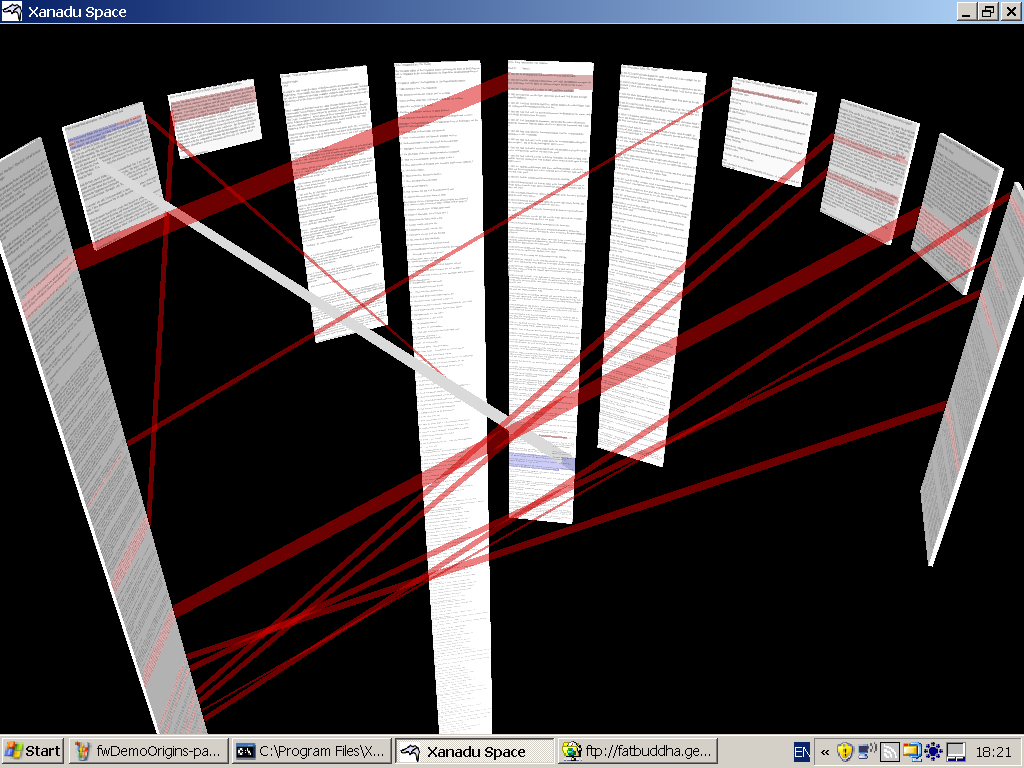
- and another, 3d, prototype

- while it never came to fruition, you can see some of the influence in modern interfaces
- if you are looking for someone to blame for your cognitive overload or 'digital neuroplasticity', you can look to both HTTP and Xanadu
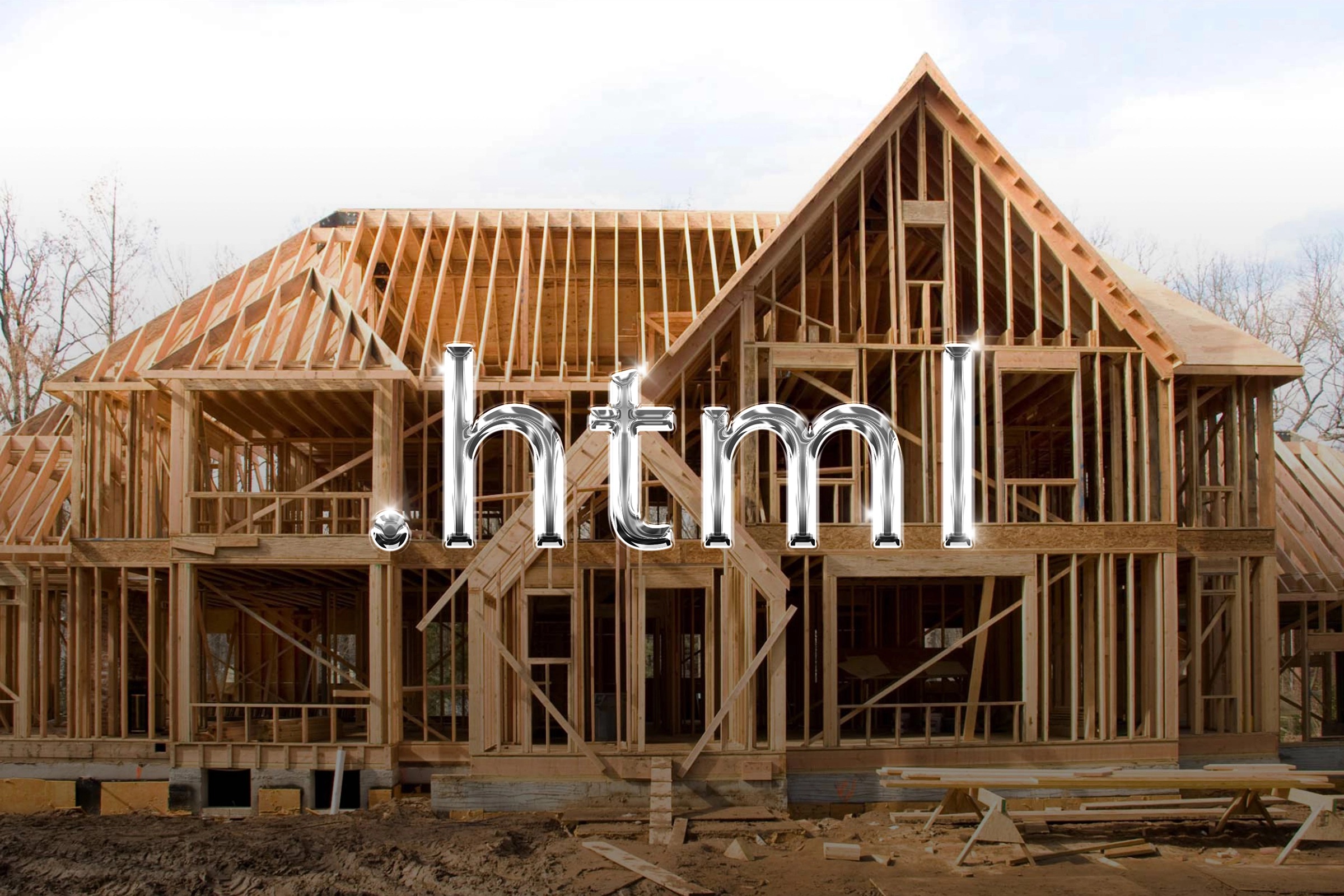


<!DOCTYPE html>
!DOCTYPE declaration... <!DOCTYPE html>
<html lang="en">
...
</html>
html tag ... <!DOCTYPE html>
<html lang="en">
<head>
...
</head>
<body>
...
</body>
</html>
<!DOCTYPE html>
<html lang="en">
<head>
<title>My Website's Title</title>
...
</head>
<body>
...
</body>
</html>
<!DOCTYPE html>
<html lang="en">
<head>
<title>My Website's Title</title>
...
</head>
<body>
<h1>My Website's Header</h1>
<p>A paragraph with some text.</p>
...
</body>
</html>

<p> A paragraph with some text. </p>
╷ ╷ ╷
│ content │
│ │
└─ opening tag closing tag ─┘
<h1> Heading 1 </h1>
<h2> Heading 2 </h2>
<h3> Heading 3 </h3>
<h4> Heading 2 </h4>
<h5> Heading 5 </h5>
Heading 1
Heading 2
Heading 3
Heading 2
Heading 5
<ol>
<li> This is an </li>
<li> Ordered </li>
<li> List </li>
</ol>
- This is an
- Ordered
- List
<a href="https://en.wikipedia.org/wiki/Hyperlink">Links!</a>
- MBCBFTW is an early net art work that relies heavily on the 'frame' element to tell a nonlinear narrative